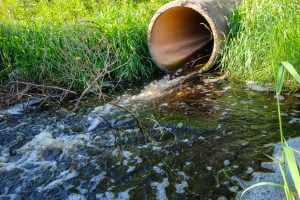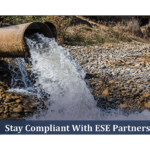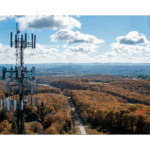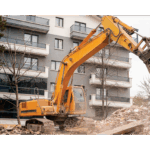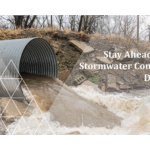Understanding the Importance of T&E Surveys
Urban development is a complex process that involves various considerations, including the preservation of natural resources and the protection of the environment. One crucial aspect of this process is the conduct of T&E surveys. These surveys play a vital role in assessing the impact of urban development projects on the environment and determining appropriate measures to mitigate any adverse effects.
T&E surveys are instrumental in providing crucial data about the flora and fauna in a given area, as well as the overall ecological health of the region. By conducting these surveys, experts can gain insights into the potential impacts on habitats, migratory patterns, and species diversity. This information is essential for making informed decisions that balance the needs of urban development with environmental conservation.
The Role of T&E Surveys in Urban Development
When planning a development project within a city like League City TX, it is essential to consider the potential impact on the surrounding environment. T&E surveys allow urban developers to assess the presence of endangered or threatened species, unique ecosystems, or important habitats within the project area. Armed with this information, they can design and implement measures to minimize the disruption to these sensitive areas.
By incorporating the findings of T&E surveys into the planning and design stages of a project, developers can adopt strategies that make the most efficient use of available resources and reduce potential harm to the environment. This approach ensures sustainable and responsible urban development that takes into account the long-term effects on the local ecosystem.
How T&E Surveys Contribute to Environmental Conservation
T&E surveys not only provide valuable data for the planning and development of projects but also contribute significantly to environmental conservation efforts. By identifying areas of high biodiversity or specific habitat types, conservation organizations and authorities can prioritize the protection of these areas through appropriate land-use planning and conservation measures.
Furthermore, T&E surveys help establish baseline data about the ecological health of an area before any development activities take place. This data serves as a reference point to evaluate the effectiveness of conservation efforts and monitor changes in the environment over time. By regularly conducting T&E surveys, authorities can make informed decisions regarding conservation policies and adapt their strategies to ensure the continued preservation of ecosystems and biodiversity.
The Process of Conducting a T&E Survey in League City TX
Conducting a T&E survey in League City TX requires careful planning, coordination, and expertise. There are specific steps and considerations that must be taken into account to ensure the accuracy and effectiveness of the survey process.
Pre-Survey Preparations and Considerations
Prior to conducting a T&E survey, it is essential to gather relevant information about the project area and its surrounding environment. This includes reviewing existing maps, reports, and databases to identify known species or habitats of concern. It is also crucial to consult with local experts, stakeholders, and regulatory agencies to gain insights into any specific requirements or considerations.
Additionally, survey teams must equip themselves with the necessary tools and equipment for data collection. This may include cameras for photographing species or habitats, GPS devices for accurate location mapping, and field guides for species identification. Adequate preparation ensures the survey runs smoothly and maximizes the potential for accurate data collection.
Key Steps in the T&E Survey Process
The T&E survey process typically involves several key steps to ensure comprehensive data collection and analysis. These steps include field surveys, data recording, laboratory analysis, and report generation.
Field surveys involve visiting the project area and conducting detailed observations of flora and fauna. Trained surveyors will record species sightings, habitat types, and any other relevant information using standardized protocols. This data is then compiled and organized for further analysis and interpretation.
In the laboratory, survey samples may undergo various tests and analyses, such as genetic studies or habitat assessments. These analyses further enhance the understanding of ecological conditions and provide vital insights into the overall health of the ecosystem.
Once all the data has been collected and analyzed, a comprehensive report is generated. This report typically includes a summary of findings, species inventories, habitat descriptions, and recommendations for mitigation measures. This report serves as a valuable resource for developers, policymakers, and conservation organizations involved in the project.
Interpreting T&E Survey Results
The interpretation of T&E survey results is a critical step in understanding the implications of the data collected. To effectively interpret the findings, it is essential to focus on key aspects such as data analysis and the implications for the specific region, in this case, League City.
Analyzing the Data: What to Look For
Analyzing the data collected during a T&E survey involves identifying patterns, trends, and significant findings. This analysis provides insights into the biodiversity, species distributions, and potential impacts on the local ecosystem. It is essential to look for changes in species populations, the presence of invasive species, or the existence of critical habitats, as these factors can significantly influence the planning and conservation efforts.
Additionally, analyzing the data may reveal important information about the overall health of the ecosystem, such as water quality, air pollution, or habitat degradation. These findings help prioritize and implement appropriate conservation strategies to mitigate any identified issues.
Implications of T&E Survey Findings for League City
The findings of a T&E survey in League City can have significant implications for the future development and conservation efforts within the city. Identified endangered or threatened species may warrant specific conservation measures, while the presence of pristine habitats may require careful land-use planning to ensure their preservation.
Furthermore, the survey results can inform policymakers and developers about potential environmental risks and the need for effective mitigation strategies. By considering the implications of T&E survey findings, League City can strike a balance between urban development and environmental conservation, ensuring a sustainable future for both.
Challenges and Solutions in T&E Surveys
Though T&E surveys are crucial for urban development and environmental conservation, they come with their fair share of challenges. Recognizing these challenges and identifying innovative solutions is key to improving the effectiveness and efficiency of the survey process.
Common Obstacles in Conducting T&E Surveys
One common challenge in conducting T&E surveys is the vastness of the study areas and the associated time and resource constraints. Survey teams may face difficulties in accessing certain locations or covering large areas within the stipulated timeline. Another challenge is the accurate identification of species, especially when dealing with cryptic or similar-looking species.
However, these challenges can be overcome through careful planning, the use of advanced technology, and collaboration with local experts. By leveraging aerial imagery, drone technology, and crowdsourcing, survey teams can optimize data collection efforts and cover larger areas efficiently. Additionally, partnerships with local universities or research institutions can provide access to experts who can aid in species identification and analysis.
Innovative Solutions for Effective T&E Surveys
To enhance the effectiveness of T&E surveys, adopting innovative solutions can significantly improve data collection, analysis, and interpretation. The use of machine learning algorithms and artificial intelligence can streamline the identification and classification of species, expediting the analysis process.
Furthermore, incorporating citizen science initiatives can help expand the reach of T&E surveys. By involving local residents and volunteers in data collection efforts, survey teams can cover more ground and collect valuable observations from various perspectives. This involvement also promotes environmental education and awareness within the community.
The Future of T&E Surveys in League City TX
The field of T&E surveys continues to evolve, driven by advancements in technology and a growing awareness of the importance of environmental conservation. As League City looks towards the future, several emerging trends and developments hold the promise of transforming the survey process.
Emerging Trends in T&E Surveys
One significant trend is the integration of remote sensing technologies in T&E surveys. Satellite imagery and LiDAR (Light Detection and Ranging) data can provide detailed information about vegetation cover, land use, and topography, complementing on-the-ground observations and enhancing the accuracy of survey findings.
Another emerging trend is the use of DNA metabarcoding, a technique that utilizes DNA analysis to identify and characterize species present in a given environment. This approach allows for rapid and cost-effective biodiversity assessments, providing a more comprehensive understanding of ecosystem health.
The Impact of Technological Advancements on T&E Surveys
Advancements in technology, such as the use of geographic information systems (GIS) and advanced modeling tools, have revolutionized the way T&E surveys are conducted and analyzed. These tools enable researchers to visualize data, analyze complex relationships, and simulate different scenarios, facilitating evidence-based decision-making.
Furthermore, the increasing availability of open-access data and online platforms for data sharing and collaboration have democratized the survey process. This accessibility allows for greater transparency and fosters interdisciplinary collaboration, ultimately enhancing the impact and applicability of T&E survey findings.
In conclusion, T&E surveys play a crucial role in urban development and environmental conservation efforts in League City TX. By understanding their importance, following a well-defined survey process, and interpreting the results effectively, stakeholders in League City can make informed decisions that balance the needs of development with the preservation of the natural environment. Overcoming challenges and embracing emerging trends and technological advancements will ensure that T&E surveys continue to provide valuable insights and shape a sustainable future for League City.
If you’re looking to ensure your urban development projects in League City TX are conducted with the utmost consideration for environmental conservation and compliance, ESE Partners is your go-to expert. Our team is equipped to handle the complexities of T&E surveys, providing you with the necessary insights to make informed decisions that align with environmental stewardship and regulatory standards. With our comprehensive environmental services, including due diligence, remediation, and compliance, we’re here to responsibly move your business forward. Don’t let changes in the USACE review process for DA permit applications slow you down. Request A Proposal today and let ESE Partners facilitate a seamless and sustainable path for your development endeavors in League City and beyond.

